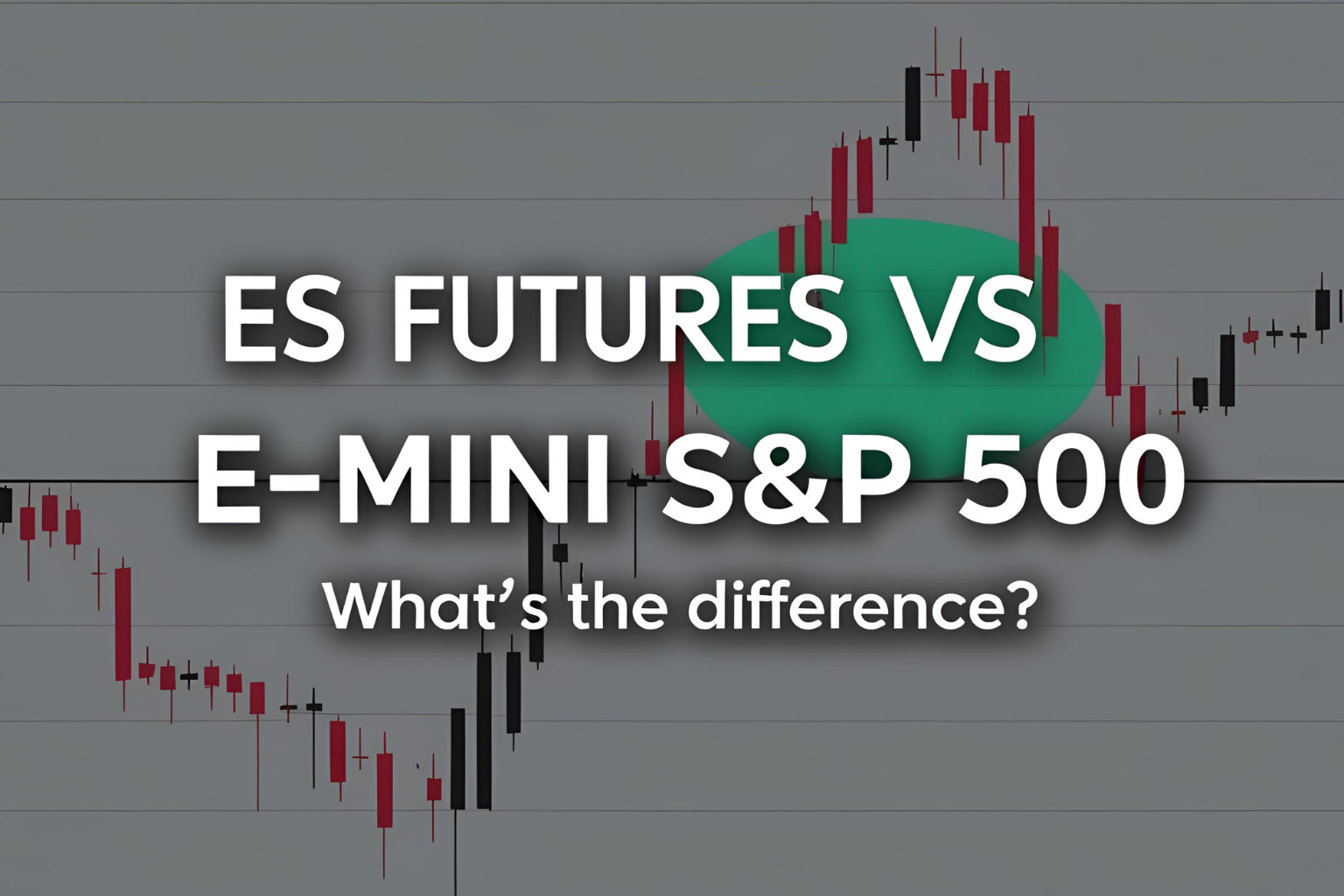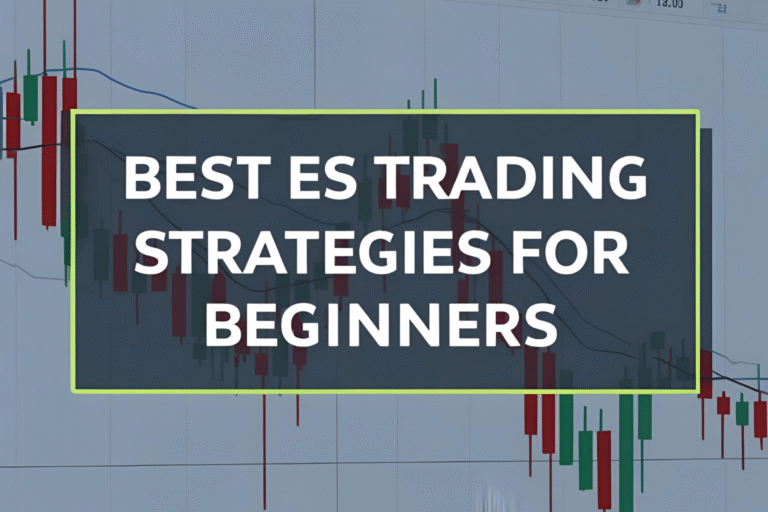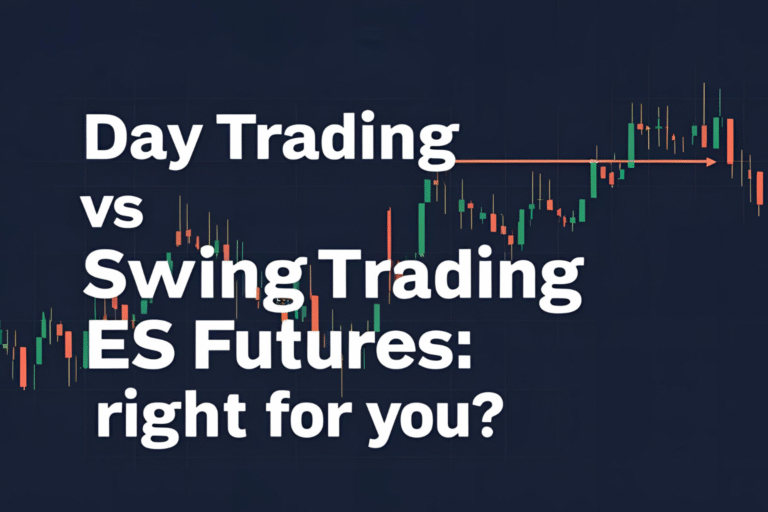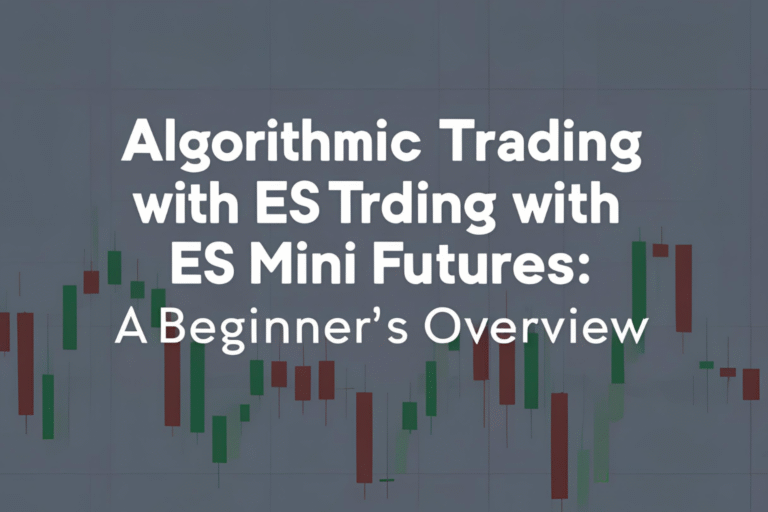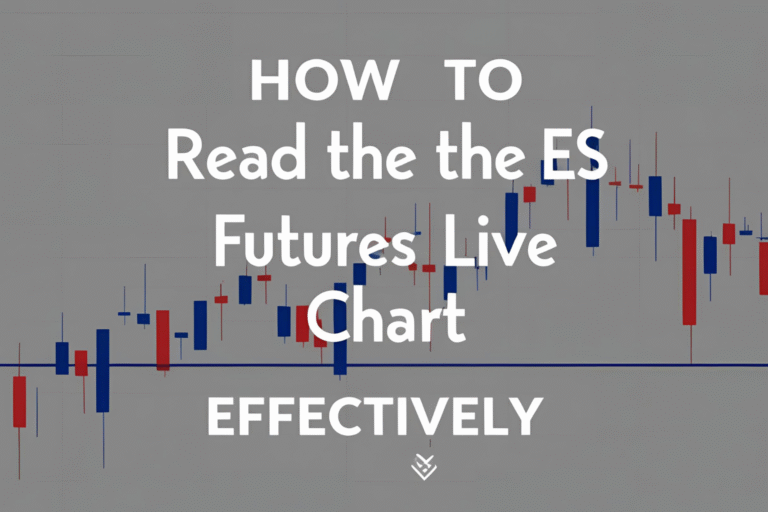ES Futures vs E-mini S&P 500: What’s the Difference?
If you’re researching futures trading, you’ve probably seen terms like ES futures and E-mini S&P 500 used interchangeably. But are they the same? Is there any technical difference?
This guide will clear up the confusion and help you understand the relationship between these two terms — especially if you’re just getting started with trading.
What Are ES Futures?
“ES” is the ticker symbol for the E-mini S&P 500 futures contract. It trades on the CME (Chicago Mercantile Exchange) and is electronically traded, hence the “E” in “E-mini.”
So when traders say “ES futures,” they’re referring to E-mini S&P 500 futures.
✅ Key takeaway:
ES futures are the E-mini S&P 500 futures. There’s no difference in contract — only in naming.
What Is the E-mini S&P 500?
The E-mini S&P 500 is a futures contract that tracks the Standard & Poor’s 500 Index (S&P 500). It was introduced in 1997 to allow individual traders to trade the index with a smaller capital outlay than the full-sized S&P 500 futures.
- Full-size S&P contract multiplier: $250 × index
- E-mini S&P 500 multiplier: $50 × index
The reduced size made futures trading accessible to retail traders, which led to massive growth in E-mini trading.
ES Futures: Basic Specifications
| Feature | ES (E-mini S&P 500 Futures) |
|---|---|
| Ticker Symbol | ES |
| Exchange | CME |
| Contract Size | $50 × S&P 500 Index |
| Minimum Tick Size | 0.25 index points |
| Tick Value | $12.50 |
| Margin Requirement | ~$10,000 (initial), varies by broker |
| Trading Hours | Nearly 24/5 |
Are There Other Types of S&P 500 Futures?
Yes, there are:
- Full-size S&P 500 Futures (Ticker: SP):
These have a $250 multiplier and are mostly used by institutions due to their large size. - Micro E-mini S&P 500 Futures (Ticker: MES):
These have a $5 multiplier — ideal for beginners and small accounts.
ES futures sit between these two, making them perfect for active individual traders.
Common Misunderstandings
Let’s clear up a few misconceptions:
- “ES” vs “E-mini”
→ No difference; ES is the symbol for the E-mini S&P 500 contract. - ES vs S&P 500 Index
→ ES is a derivative of the index — you’re not owning stocks, you’re trading price movement. - ES vs SPY ETF
→ SPY is an ETF; ES is a leveraged futures contract with margin and expiry.
Why This Naming Confusion Happens
The futures market uses ticker symbols like “ES” for ease and speed, especially among professionals. But the full name, E-mini S&P 500 futures, is used in formal content and trading platforms.
That’s why you’ll see blog titles, courses, or videos mention either term — but they all refer to the same contract.
Final Thoughts
If you’re wondering whether you should say “ES futures” or “E-mini S&P 500,” the answer is simple: both mean the same thing.
Just remember:
- ES = trading symbol
- E-mini S&P 500 = full contract name
This clarity helps when reading charts, selecting trading platforms, or discussing strategies with other traders.
✅ FAQs
1. Are ES futures and E-mini S&P 500 the same?
Yes, ES is the ticker symbol for the E-mini S&P 500 futures contract.
2. What does ES stand for in trading?
ES stands for the E-mini S&P 500 futures contract traded on CME.
3. What is the size of an ES futures contract?
Each contract represents $50 × the S&P 500 Index value.
4. What’s the difference between ES and SP futures?
ES is the E-mini version ($50 multiplier), while SP is the full-size contract ($250 multiplier).
5. Is ES good for retail traders?
Yes, ES futures are highly liquid and well-suited for active retail traders.
